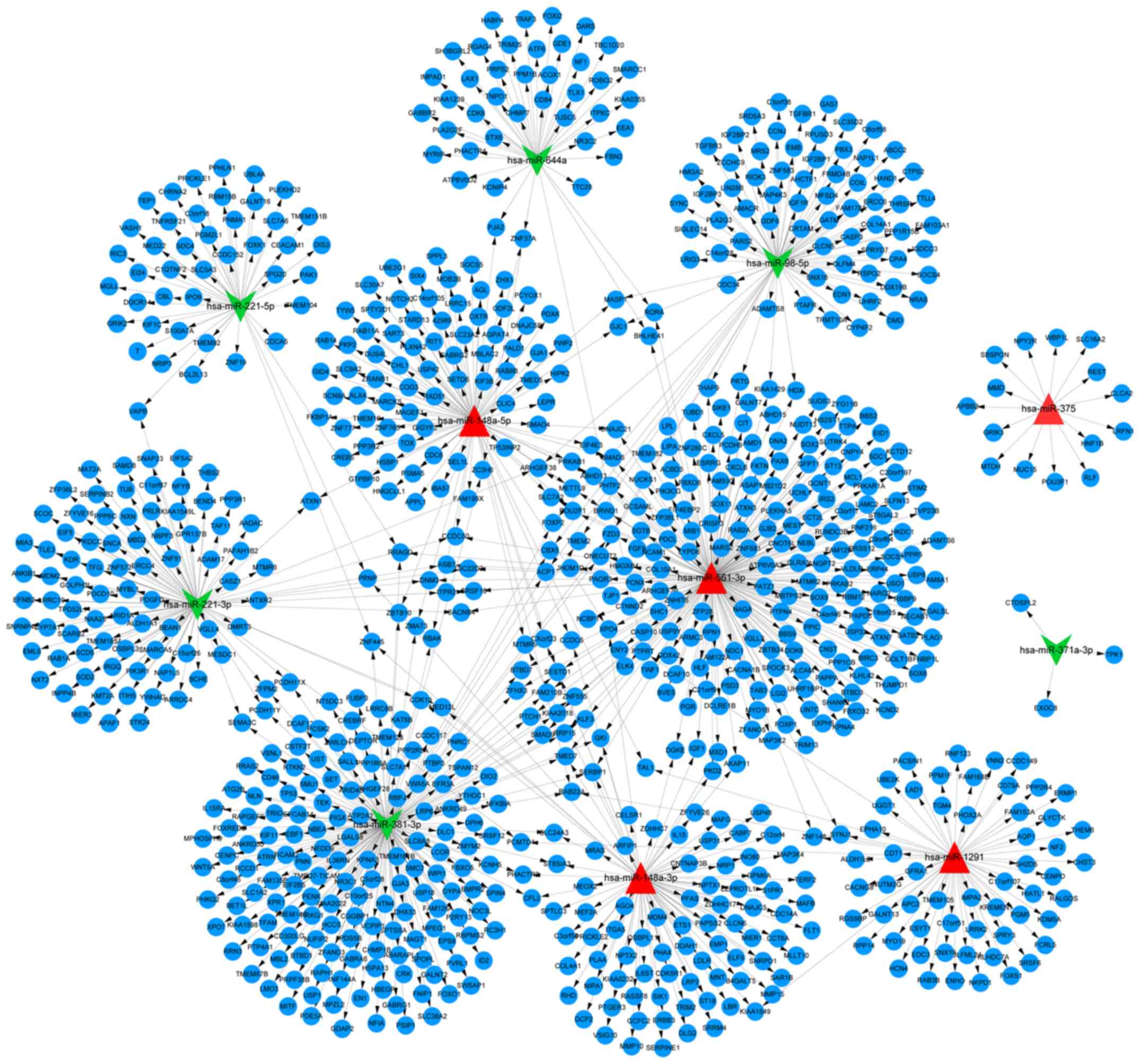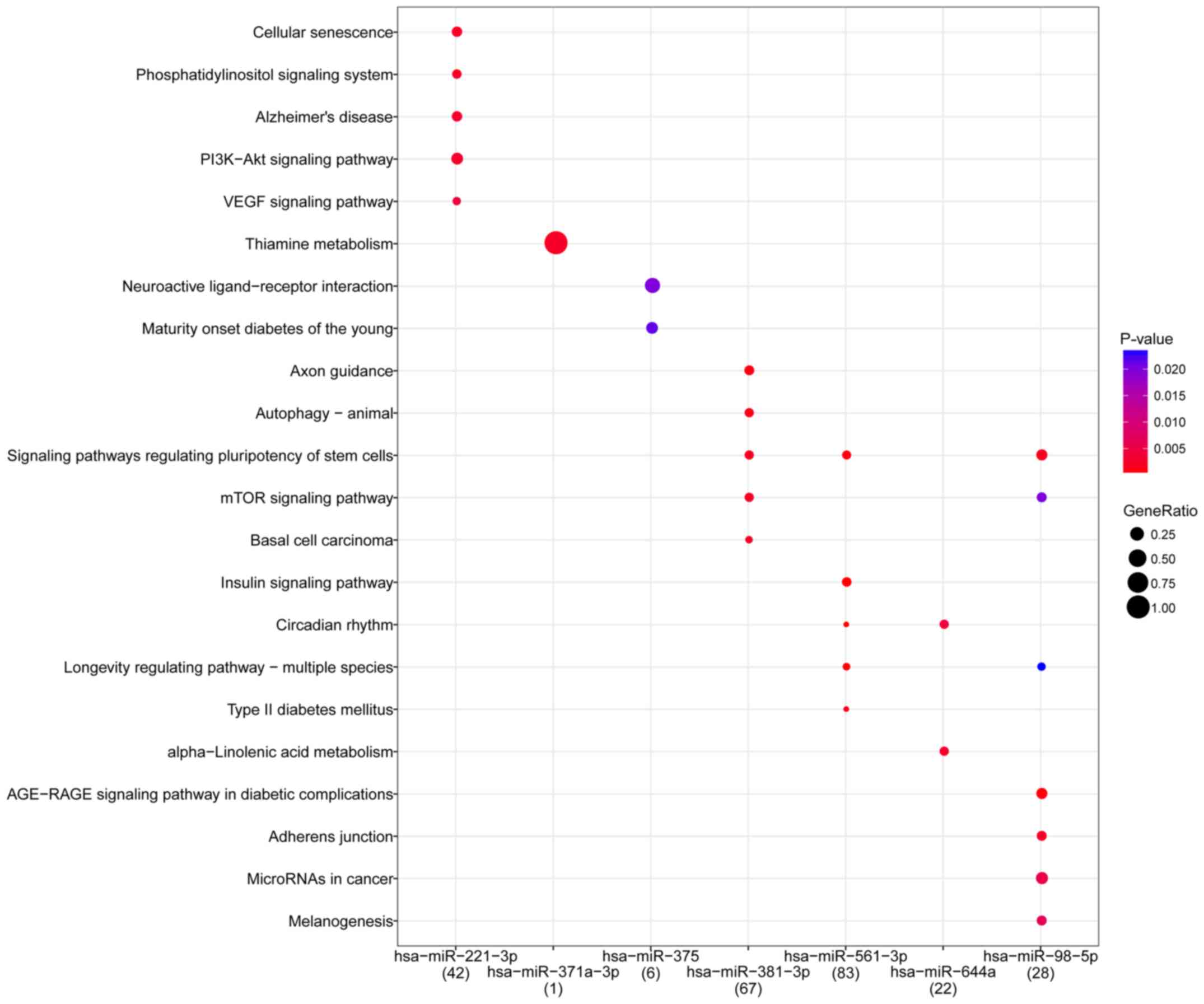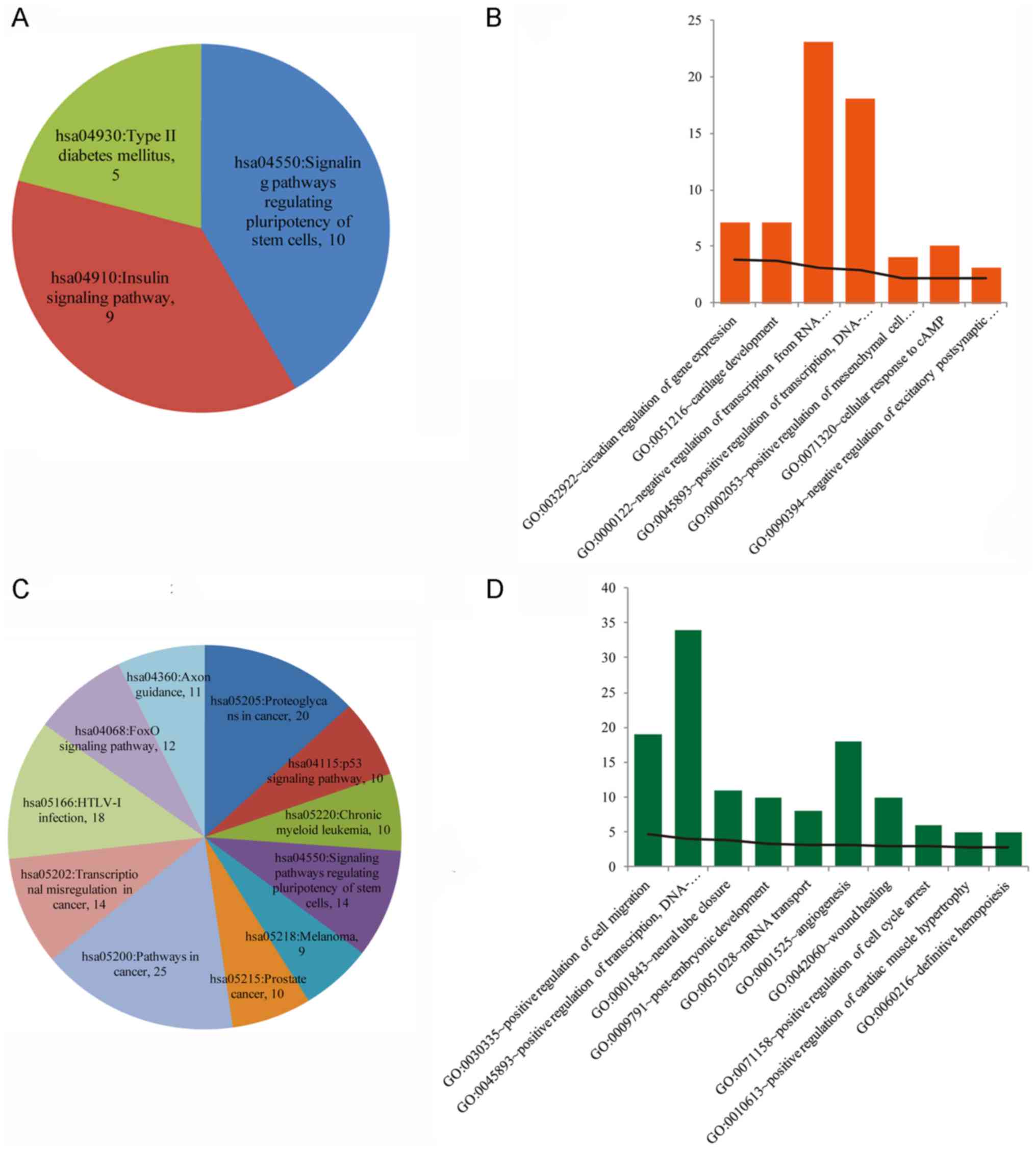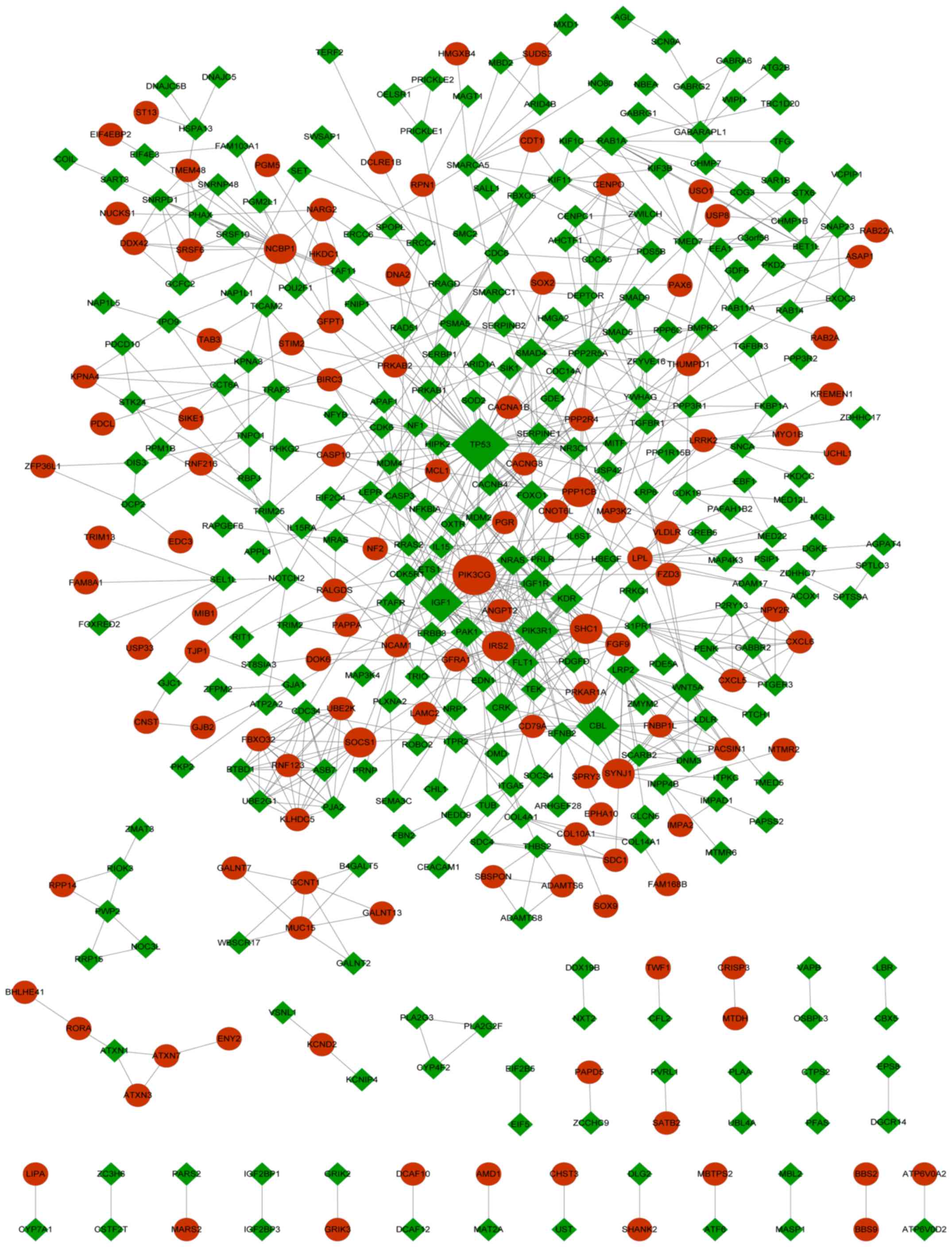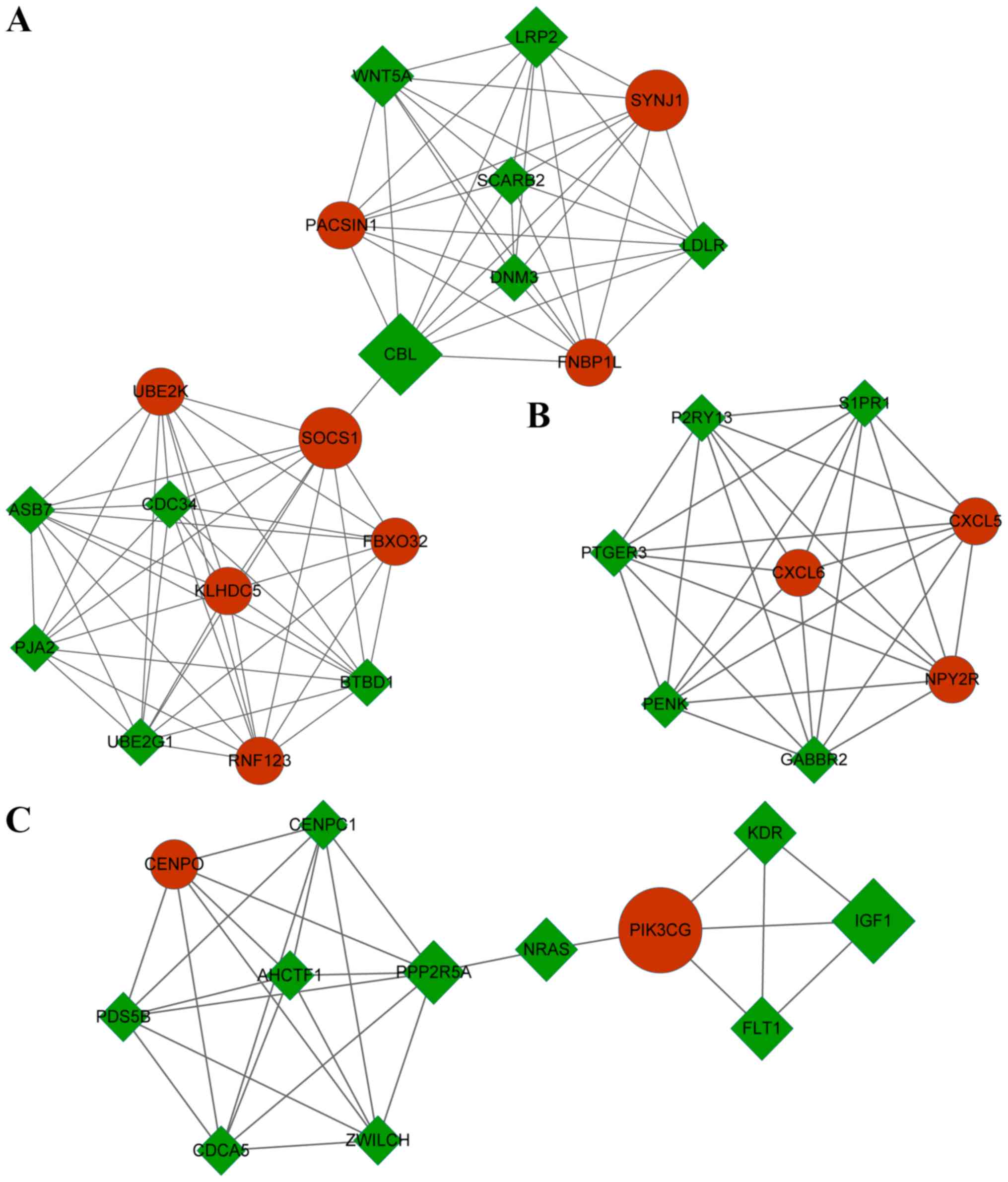|
1
|
WS Jr, Tarbell NJ, Yao M, Mehta MP and Wo
JY: Rectal Cancer. John Wiley & Sons, Inc. 2017.
|
|
2
|
Jomrich G, Silberhumer GR, Marian B, Beer
A and Müllauer L: Programmed death-ligand 1 expression in rectal
cancer. Eur Surg. 48:1–5. 2016. View Article : Google Scholar
|
|
3
|
Kim JS, Jeong SY, Shin R, Oh HK, Park KJ
and Park JG: 314. Preoperative versus postoperative
chemoradiotherapy for locally advanced rectal cancer. Eur J Surg
Oncol. 38:831. 2012. View Article : Google Scholar
|
|
4
|
Alderdice M, Dunne PD, Cole AJ, O'Reilly
PG, McArt DG, Bingham V, Fuchs MA, McQuaid S, Loughrey MB, Murray
GI, et al: Natural killer-like signature observed post therapy in
locally advanced rectal cancer is a determinant of pathological
response and improved survival. Mod Pathol. 30:1287–1298. 2017.
View Article : Google Scholar : PubMed/NCBI
|
|
5
|
Sauer R, Becker H, Hohenberger W, Rödel C,
Wittekind C, Fietkau R, Martus P, Tschmelitsch J, Hager E, Hess CF,
et al: Preoperative versus postoperative chemoradiotherapy for
rectal cancer. N Engl J Med. 351:1731–1740. 2004. View Article : Google Scholar : PubMed/NCBI
|
|
6
|
Cervantes A and Glynne-Jones R: Adjuvant
chemotherapy for rectal cancer after preoperative radiation or
chemoradiation: One size does not fit all. Ann Oncol. 26:617–619.
2015. View Article : Google Scholar : PubMed/NCBI
|
|
7
|
Bandres E, Agirre X, Bitarte N, Ramirez N,
Zarate R, Roman-Gomez J, Prosper F and Garcia-Foncillas J:
Epigenetic regulation of microRNA expression in colorectal cancer.
Int J Cancer. 125:2737–2743. 2009. View Article : Google Scholar : PubMed/NCBI
|
|
8
|
Gaedcke J, Grade M, Søkilde R, Kaczkowski
B, Difilippantonio M, Ghadimi M, Ried T and Litman T: Abstract
#584: miRNA profiles predictive for response to chemoradiotherapy
in rectal cancer. Cancer Res. 69:2009.
|
|
9
|
Svoboda M, Sana J, Fabian P, Kocakova I,
Gombosova J, Nekvindova J, Radova L, Vyzula R and Slaby O: MicroRNA
expression profile associated with response to neoadjuvant
chemoradiotherapy in locally advanced rectal cancer patients.
Radiat Oncol. 7:1952012. View Article : Google Scholar : PubMed/NCBI
|
|
10
|
Drebber U, Lay M, Wedemeyer I, Vallböhmer
D, Bollschweiler E, Brabender J, Mönig SP, Hölscher AH, Dienes HP
and Odenthal M: Altered levels of the onco-microRNA 21 and the
tumor-suppressor microRNAs 143 and 145 in advanced rectal cancer
indicate successful neoadjuvant chemoradiotherapy. Int J Oncol.
39:409–415. 2011.PubMed/NCBI
|
|
11
|
Pradhan M, Ledford L, Pandit Y and Palakal
M: Global analysis of miRNA target genes in colon rectal cancer.
IEEE International Conference on Bioinformatics and Biomedicine.
341–345. 2011.
|
|
12
|
Ju JA, Huang CT, Lan SH, Wang TH, Lin PC,
Lee JC, Tian YF and Liu HS: Characterization of a colorectal cancer
migration and autophagy-related microRNA miR-338-5p and its target
gene PIK3C3. Biomarkers Genomic Med. 5:74–78. 2013. View Article : Google Scholar
|
|
13
|
Naccarati A, Pardini B, Stefano L, Landi
D, Slyskova J, Novotny J, Levy M, Polakova V, Lipska L and Vodicka
P: Polymorphisms in miRNA-binding sites of nucleotide excision
repair genes and colorectal cancer risk. Carcinogenesis.
33:1346–1351. 2012. View Article : Google Scholar : PubMed/NCBI
|
|
14
|
Conde-Muino R, Cano C, Sanchez-Martin V,
Herrera A, Comino A, Medina PP Palma P and Cuadros M: Preoperative
chemoradiotherapy for rectal cancer: The sensitizer role of the
association between miR-375 and c-Myc. Oncotarget. 8:82294–82302.
2017. View Article : Google Scholar : PubMed/NCBI
|
|
15
|
Smyth GK: Limma: Linear models for
microarray data. Bioinformatics and Computational Biology Solutions
Using R and Bioconductor. Gentleman R, Carey VJ, Huber W, Irizarry
RA and Dudoit S: Springer New York. (New York, NY). 397–420. 2005.
View Article : Google Scholar
|
|
16
|
Benjamini Y and Hochberg Y: Controlling
the false discovery rate: A practical and powerful approach to
multiple testing. J R Stat Soc Series B (Methodological). 289–300.
1995. View Article : Google Scholar
|
|
17
|
Dweep H and Gretz N: miRWalk2.0: A
comprehensive atlas of microRNA-target interactions. Nat Methods.
12:6972015. View Article : Google Scholar : PubMed/NCBI
|
|
18
|
Dweep H, Gretz N and Sticht C: miRWalk
database for miRNA-target interactions. Methods Mol Biol.
1182:289–305. 2014. View Article : Google Scholar : PubMed/NCBI
|
|
19
|
Betel D, Koppal A, Agius P, Sander C and
Leslie C: Comprehensive modeling of microRNA targets predicts
functional non-conserved and non-canonical sites. Genome Biol.
11:R902010. View Article : Google Scholar : PubMed/NCBI
|
|
20
|
Wong N and Wang X: miRDB: An online
resource for microRNA target prediction and functional annotations.
Nucleic Acids Res. 43:D146–D152. 2015. View Article : Google Scholar : PubMed/NCBI
|
|
21
|
Vejnar CE and Zdobnov EM: MiRmap:
Comprehensive prediction of microRNA target repression strength.
Nucleic Acids Res. 40:11673–11683. 2012. View Article : Google Scholar : PubMed/NCBI
|
|
22
|
Rigoutsos I, Miranda K and Huynh T: rna22:
A unified computational framework for discovering miRNA precursors,
localizing mature miRNAs, identifying 3′UTR Target-islands and
determining the targets of mature-miRNAs. IBM Corporation.
(Yorktown Heights, NY, USA). 2007.
|
|
23
|
Agarwal V, Bell GW, Nam JW and Bartel DP:
Predicting effective microRNA target sites in mammalian mRNAs.
eLife. 4:e050052015. View Article : Google Scholar
|
|
24
|
Shannon P, Markiel A, Ozier O, Baliga NS,
Wang JT, Ramage D, Amin N, Schwikowski B and Ideker T: Cytoscape: A
software environment for integrated models of biomolecular
interaction networks. Genome Res. 13:2498–2504. 2003. View Article : Google Scholar : PubMed/NCBI
|
|
25
|
Kanehisa M and Goto S: KEGG: Kyoto
encyclopedia of genes and genomes. Nucleic Acids Res. 28:27–30.
2000. View Article : Google Scholar : PubMed/NCBI
|
|
26
|
Song W, Liu H, Wang J, Kong Y, Yin X and
Zang W: MATHT: A web server for comprehensive transcriptome data
analysis. J Theor Biol. 455:140–146. 2018. View Article : Google Scholar : PubMed/NCBI
|
|
27
|
Szklarczyk D, Franceschini A, Wyder S,
Forslund K, Heller D, Huerta-Cepas J, Simonovic M, Roth A, Santos
A, Tsafou KP, et al: STRING v10: Protein-protein interaction
networks, integrated over the tree of life. Nucleic Acids Res.
43:D447–D452. 2015. View Article : Google Scholar : PubMed/NCBI
|
|
28
|
Catto JW, Alcaraz A, Bjartell AS, De Vere
White R, Evans CP, Fussel S, Hamdy FC, Kallioniemi O, Mengual L,
Schlomm T and Visakorpi T: MicroRNA in prostate, bladder and kidney
cancer: A systematic review. Eur Urol. 59:671–681. 2011. View Article : Google Scholar : PubMed/NCBI
|
|
29
|
Lu J, Getz G, Miska EA, Alvarez-Saavedra
E, Lamb J, Peck D, Sweet-Cordero A, Ebert BL, Mak RH, Ferrando AA,
et al: MicroRNA expression profiles classify human cancers. Nature.
435:834–838. 2005. View Article : Google Scholar : PubMed/NCBI
|
|
30
|
Ruf CG, Dinger D, Port M, Schmelz HU,
Wagner W, Matthies C, Müller-Myhsok B, Meineke V and Abend M: Small
RNAs in the peripheral blood discriminate metastasized from
non-metastasized seminoma. Mol Cancer. 13:472014. View Article : Google Scholar : PubMed/NCBI
|
|
31
|
Dieckmann KP, Radtke A, Spiekermann M,
Balks T, Matthies C, Becker P, Ruf C, Oing C, Oechsle K, Bokemeyer
C, et al: Serum levels of MicroRNA miR-371a-3p: A sensitive and
specific new biomarker for germ cell tumours. Eur Urol. 71:213–220.
2017. View Article : Google Scholar : PubMed/NCBI
|
|
32
|
Spiekermann M, Belge G, Winter N, Ikogho
R, Balks T, Bullerdiek J and Dieckmann KP: MicroRNA miR-371a-3p in
serum of patients with germ cell tumours: Evaluations for
establishing a serum biomarker. Andrology. 3:78–84. 2015.
View Article : Google Scholar : PubMed/NCBI
|
|
33
|
Slattery ML, Potter JD, Coates A, Ma KN,
Berry TD, Duncan DM and Caan BJ: Plant foods and colon cancer: An
assessment of specific foods and their related nutrients (United
States). Cancer Causes Control. 8:575–590. 1997. View Article : Google Scholar : PubMed/NCBI
|
|
34
|
Lu'o'ng KV and Nguyễn LT: The role of
thiamine in cancer: Possible genetic and cellular signaling
mechanisms. Cancer Genomics Proteomics. 10:169–185. 2013.PubMed/NCBI
|
|
35
|
Buczacki S, Davies RJ and Winton DJ: Stem
cells, quiescence and rectal carcinoma: an unexplored relationship
and potential therapeutic target. Br J Cancer. 105:1253–1259. 2011.
View Article : Google Scholar : PubMed/NCBI
|
|
36
|
Mirzaei A, Tavoosidana G, Modarressi MH,
Rad AA, Fazeli MS, Shirkoohi R, Tavakoli-Yaraki M and Madjd Z:
Upregulation of circulating cancer stem cell marker, DCLK1 but not
Lgr5, in chemoradiotherapy-treated colorectal cancer patients.
Tumour Biol. 36:4801–4810. 2015. View Article : Google Scholar : PubMed/NCBI
|
|
37
|
Hiroishi K, Inomata M, Kashima K, Yasuda
K, Shiraishi N, Yokoyama S and Kitano S: Cancer stem cell-related
factors are associated with the efficacy of pre-operative
chemoradiotherapy for locally advanced rectal cancer. Exp Ther Med.
2:465–470. 2011. View Article : Google Scholar : PubMed/NCBI
|
|
38
|
Semba S, Itoh N, Ito M, Youssef EM, Harada
M, Moriya T, Kimura W and Yamakawa M: Down-regulation of PIK3CG, a
catalytic subunit of phosphatidylinositol 3-OH kinase, by CpG
hypermethylation in human colorectal carcinoma. Clin Cancer Res.
8:3824–3831. 2002.PubMed/NCBI
|
|
39
|
Jarrett CR, Blancato J, Cao T, Bressette
DS, Cepeda M, Young PE, King CR and Byers SW: Human APC2
localization and allelic imbalance. Cancer Res. 61:7978–7984.
2001.PubMed/NCBI
|
|
40
|
Yang D, Zhang M and Gold B: Origin of
somatic mutations in β-catenin versus APC in colon cancer: Random
mutagenesis in animal models versus Non-random mutagenesis in
humans. Chem Res Toxicol. 30:1369–1375. 2017. View Article : Google Scholar : PubMed/NCBI
|
|
41
|
Hao T and Brooks TA: Abstract 2110:
Modulating NRAS mRNA translation by nucleic acid clamp-mediated
stabilization of the 5′-UTR G-quadruplex. Cancer Res. 75:21102015.
View Article : Google Scholar
|
|
42
|
Vaughn CP, Zobell SD, Furtado LV, Baker CL
and Samowitz WS: Frequency of KRAS, BRAF, and NRAS mutations in
colorectal cancer. Genes Chromosomes Cancer. 50:307–312. 2011.
View Article : Google Scholar : PubMed/NCBI
|
|
43
|
Jauhri M, Bhatnagar A, Gupta S, Bp M,
Minhas S, Shokeen Y and Aggarwal S: Prevalence and coexistence of
KRAS, BRAF, PIK3CA, NRAS, TP53, and APC mutations in Indian
colorectal cancer patients: Next-generation sequencing-based cohort
study. Tumour Biol. 39:10104283176922652017. View Article : Google Scholar : PubMed/NCBI
|
|
44
|
Hsu HC, Thiam TK, Lu YJ, Yeh CY, Tsai WS,
You JF, Hung HY, Tsai CN, Hsu A, Chen HC, et al: Mutations of
KRAS/NRAS/BRAF predict cetuximab resistance in metastatic
colorectal cancer patients. Oncotarget. 7:22257–22270. 2016.
View Article : Google Scholar : PubMed/NCBI
|
|
45
|
Bagadi SB, Sanghvi M, Nair SB and Das BR:
Combined mutational analysis of KRAS, NRAS and BRAF genes in Indian
patients with colorectal carcinoma. Int J Biol Markers. 27:27–33.
2012. View Article : Google Scholar : PubMed/NCBI
|















